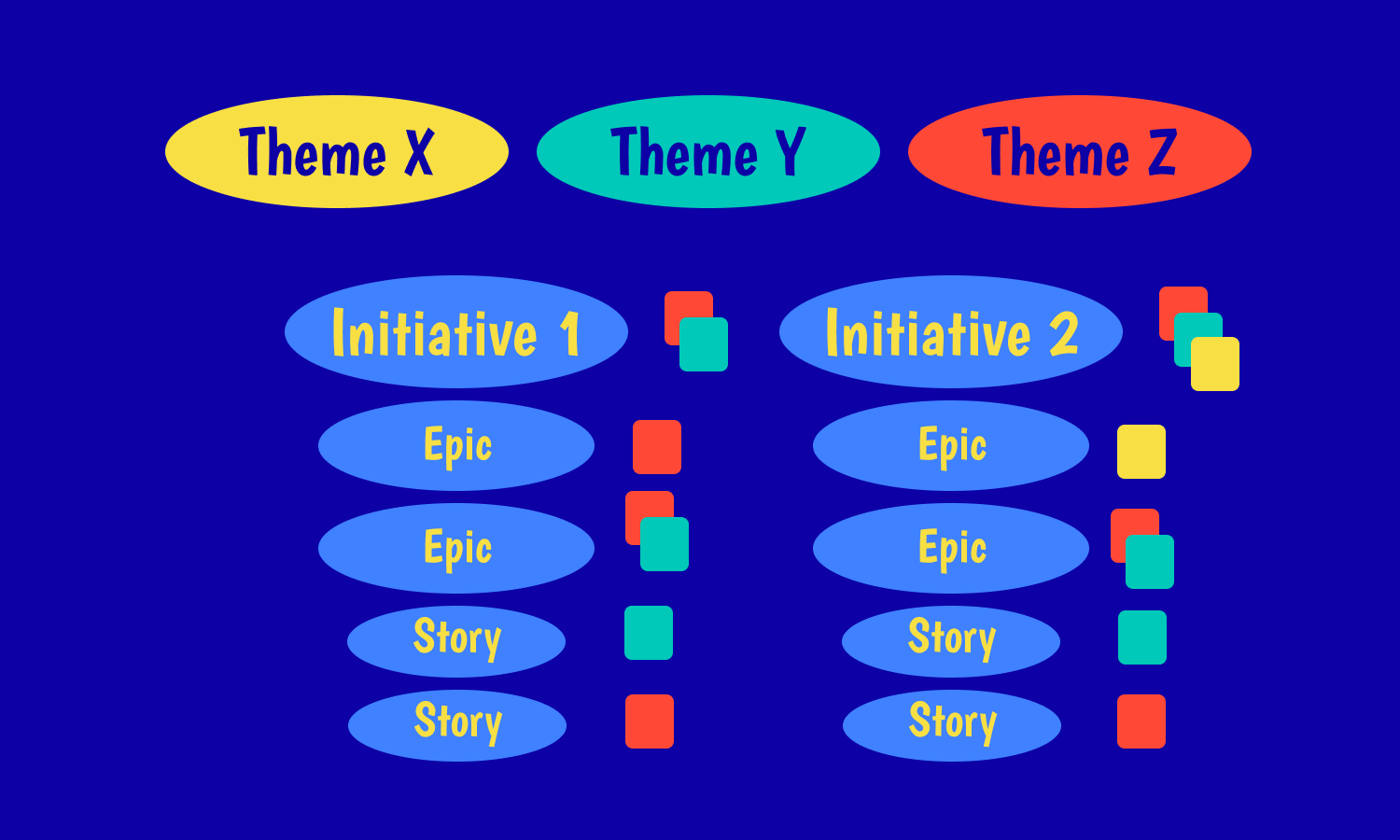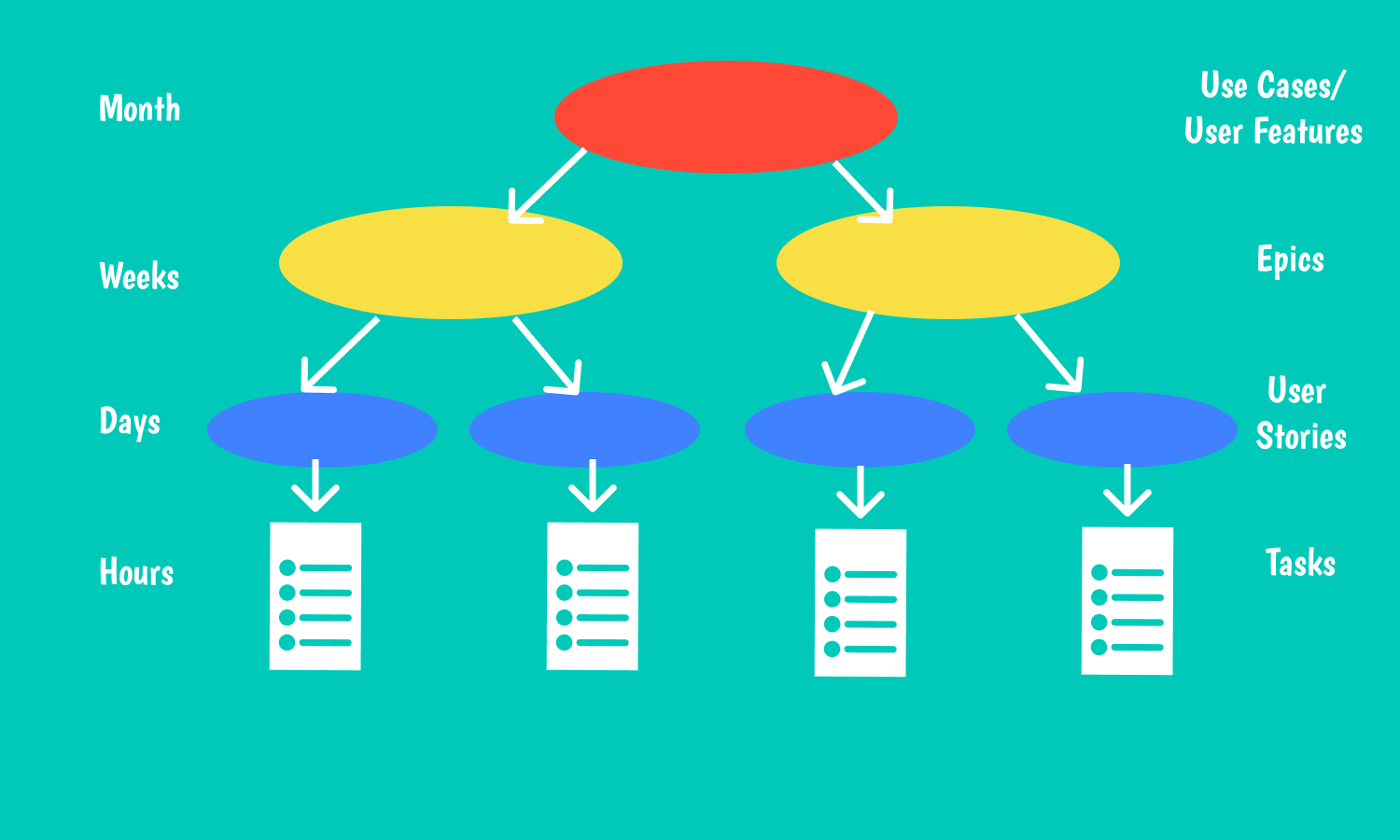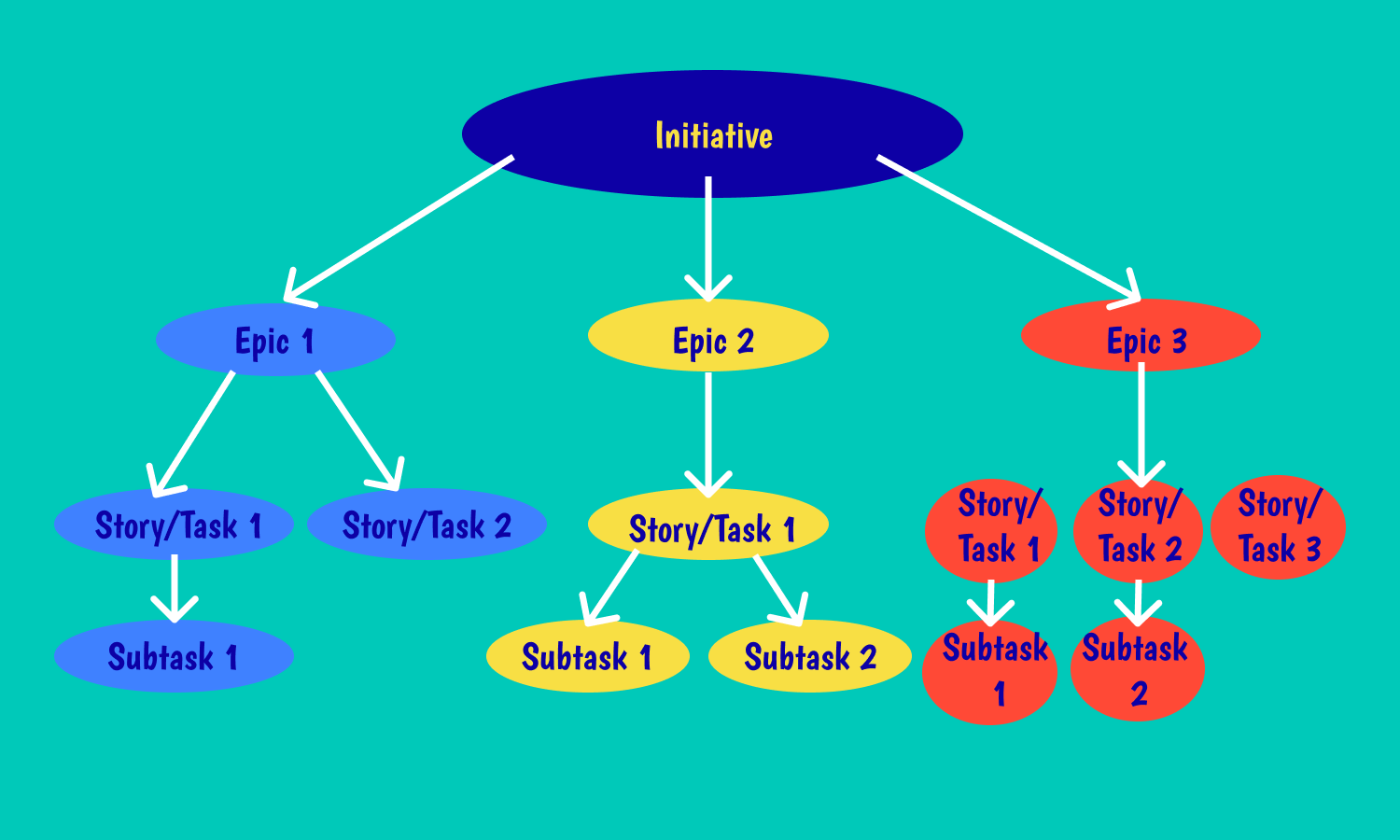User Stories, Epics, Initiatives, And Themes
How do stories, epics, initiatives, and themes fit into Agile development?
Browse topics
Complex projects require thorough planning and structuring of your work. If you want to reinvent the bicycle or send a super innovative submarine underwater, you’ll need to care about work structure: from the global objectives down to the shallow details.
To report your progress, follow the plan, and respond to change, you will need robust Agile project management tools such as user stories, epics, themes, and initiatives.

These reliable DevOps and Agile elements will help your team to optimize and structure work, find a proper balance between flexibility and delivering complex solutions.
What is the difference between epic, user stories, and tasks? How to differentiate Agile themes and initiatives? Who and why writes stories, epics, and other essential Agile docs? High time to receive the answers!
Introducing Stories, Epics, Initiatives, and Themes
What are the stories and epics in Agile? What should we know about themes and initiatives?
- A user story (or simply – story) is a brief request or requirement composed from the end users’ perspective.
- An epic is a large piece of work that is typically broken down into small pieces (tasks known as stories).
- An initiative represents epic collections that lead to a common goal.
- A theme can be considered as a large area that spans the whole company.

Epics versus Stories
What is a project story and what are epics in Agile?
Many people used to compare the stories and epics in Agile with the literature or movies’ equivalents:
- A story is a single narrative.
- A live feed with a vertical view is what mobile app users require.
In the management of projects, everything looks the same: completion of connected stories will lead to completion of the epic.
According to Agile reality, stories are something that teams should finish within a sprint or two. Epics are few. They usually take more time to complete. Agile teams typically have 2 or 3 epics with the aim to finish them each quarter.
What are examples of stories?
- People who use Androids need to be linked to the Apple store.
- Mobile app users need access to a vertical view of the live feed.
Who usually prepares epics and stories
Ideally, epics, user stories, and other types of tech documentation should be written by a professional BA (business analyst).
The BA first arranges research of a specific business niche, explores rivals, clarifies business needs, and only then starts preparing tech documentation.

What Is the Number of User Stories Allowed in One Epic?
There is no ideal number. All projects are different. However, it is recommended to add no more than 15 stories to one epic. Doing this way, you will be able to complete it within 3 months and continue further development.
What Does an Efficient Epic Include?
A typical epic includes project, design, and technical requirements.
You should also write an introduction that will explain what and why should be added to the current project, as well as what business metrics should be improved.
Why Creating Epics and User Stories
Without stories and epics, it will be harder to develop your project. So if you want to track all development steps and prioritize professionally, then you need to care about writing clearly formulated user stories and epics.
How Do Developers Define the Most Important Thing While Working with Stories and Epics?
According to Scrum structure, a PO (Product Owner) is a person who deals with preparing Agile user stories and epics. PO (who doesn’t work in isolation) defines what should be developed and the sequence of items. He/she constantly communicates with developers with the aim to turn stakeholders’ ideas into epics and user stories. From the perspective of the dev team, all stories which should be developed in a sprint can be considered as a simple to-do list. User stories are backlog items and they constitute an increment — a shippable piece of software that should be built within a sprint. Dev teams may work on Agile stories that belong to different epics. Priorities and team velocity are the factors that affect this.
Using Stories & Epics for Estimation Purposes
Remember that besides using epics and stories for organizing the team’s work, they can assist you in calculating the budget for your project. The reason is the same: when you break the functionality into pieces and estimate each of them separately, you get the entire process much easier and much more transparent. In the estimation doc provided to a client, you can mention the number of hours our specialists need to complete a user story.
Epics versus Initiatives
Initiatives consist of epics in the same way that epics include Agile user stories. However, initiatives propose another organization level above epics.
Often an initiative involves epics from different teams to reach a more global goal than any of the epics. It will take a month or a couple of months to complete an epic, but, to finalize an initiative, you will need to have a quarter or even a year.
What Are Epics and Initiative Examples?
The organization striving to launch a new product wants to decrease costs by 7% this year. It is an initiative because no epic could achieve such a big goal.

Initiatives versus Themes
What Are Themes in Agile?
Many companies encourage aspiring to some desired destination. These goals are rather trivial and they are announced each quarter or yearly. Initiatives can be considered as themes and epics’ collections. They represent labels that track the key goals and objectives of the company. Well-structured initiatives contain epics, completion of which will lead to the completion of the initiative. With the help of the themes, Agile teams can label backlog items, epics, and initiatives that will help team members to realize what efforts are required to achieve the high-level goals.
How Stories, Epics, Themes, and Initiatives Benefit Your Team
Professionals highlight three common benefits of dividing development work into epics and stories and the rest chunks:
1. Allowing strategic decisions
A story point is a fundamental measurement unit in Agile. The metric estimates the effort needed to complete a certain backlog item. When assigning story points estimation to stories, teams can add all points that accumulate to a given epic, and realize how many resources and how much time that epic will take. As a result, the team will be able to pick up the option for better allocating its development time and its limited resources.
2. Focusing on main goals
We can consider themes as essential goals on a product roadmap and user stories are tactical units in the development process. In order to tie all these items on the roadmap, you’ll need epics that will keep your team performing toward the shared project plan and objectives.
3. Improving estimates on a timeline and tracking performance
Any team can suddenly realize that its members can complete up to 20 story points of work in a given sprint. Reviewing stories and epics from upcoming work, the Agile team will know in advance if a planned sprint contains too little or too much work. It will positively impact estimation team capabilities and guarantee that the team will not overuse its resources and leave developers without work.
Why Structuring Work in the Agile Way
Providing the capability to break work down, Agile empowers you to thoroughly track each project and strategic initiative. It positively affects the transparency of the work processes from the top to bottom levels. By breaking work into small chunks your team will be able to generate a clear structure of project tasks and concentrate on completing work faster. Additionally, the structure will serve as a guide to the entire company.
Wrap Up
Agile initiatives, themes, epics, and project stories do really matter. These structures help Agile teams gracefully manage scope and structure work. We hope they’ll help you as well!
